Nobody can cheat death, but for thousands of years, humans have tried to elude decomposition. Whether we’re saving our bodies for the afterlife or time travelling to a better future, peoples throughout history have gone to astounding lengths to preserve their mortal remains.
Here are five fascinating ways human corpses have defied the natural process of decay.
Mummification
You can’t talk body preservation without talking mummies, one of the oldest and most renowned methods. Mummification is best known for its appearance in ancient Egypt, but mummies are a hallmark of dozens of ancient cultures, from Aztecs to Pacific Islanders.
Still, since Egyptian mummification is so well-documented, it’s a good touchstone for how the process worked. While the appearance of the first intentional mummies in Egypt is a matter of debate, by the Middle Kingdom (2000 – 1700 BC), it was common practice for families of means to submit their loved ones to a lengthy mummification process upon death. First, the body was eviscerated; all internal organs were removed except the heart, which was deemed necessary for the journey to the afterlife. That squishy thing inside your skull, however, had to go. As far as archaeologists can tell, the brain was removed using a highly scientific methodology: sticking a hook up the nose, swirling it around to make brain slushy, and tiling the head forward to pour out the goop.
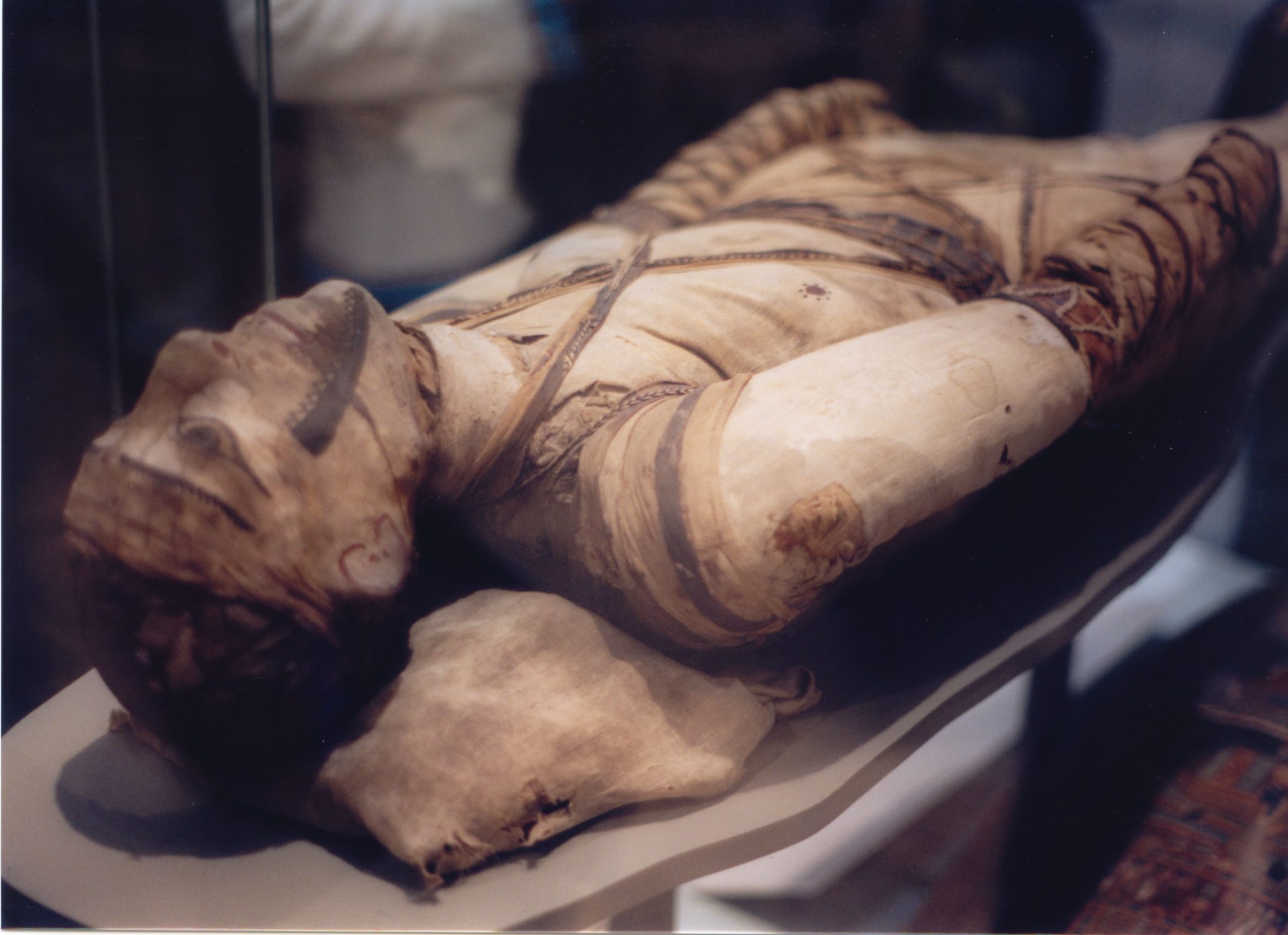
Egyptian mummy at the British Museum. Image Credit: Klafubra/Wikimedia
The gutted corpse was then washed out with a mixture of spices and palm wine, which helped prevent bacterial decay, before it was basted with natron salts and left to shrivel into human jerky for 40-odd days. After desiccation, the body was washed again, wrapped in layer upon layer of linen cloth, and coated with resin to prevent water damage. The mummy was then sealed in a tomb along with a bunch of useful worldly goods.
The process of mummifying a corpse wasn’t for the fainthearted; but far more grisly is the act of self mummification, famously achieved by several devout practitioners of Shingon Buddhism in Japan between the 12th and early 20th centuries. To achieve transcendence, these brave souls would prepare their bodies for mummification through an intense, 3000-day training process that io9 describes in rich detail. Highlights involve replacing one’s normal diet with pine needles, tree bark, stones and resins in an attempt to kickstart the embalming process during life. Once the half-starved — partially mummified? — ascetic was ready, he’d be buried alive.
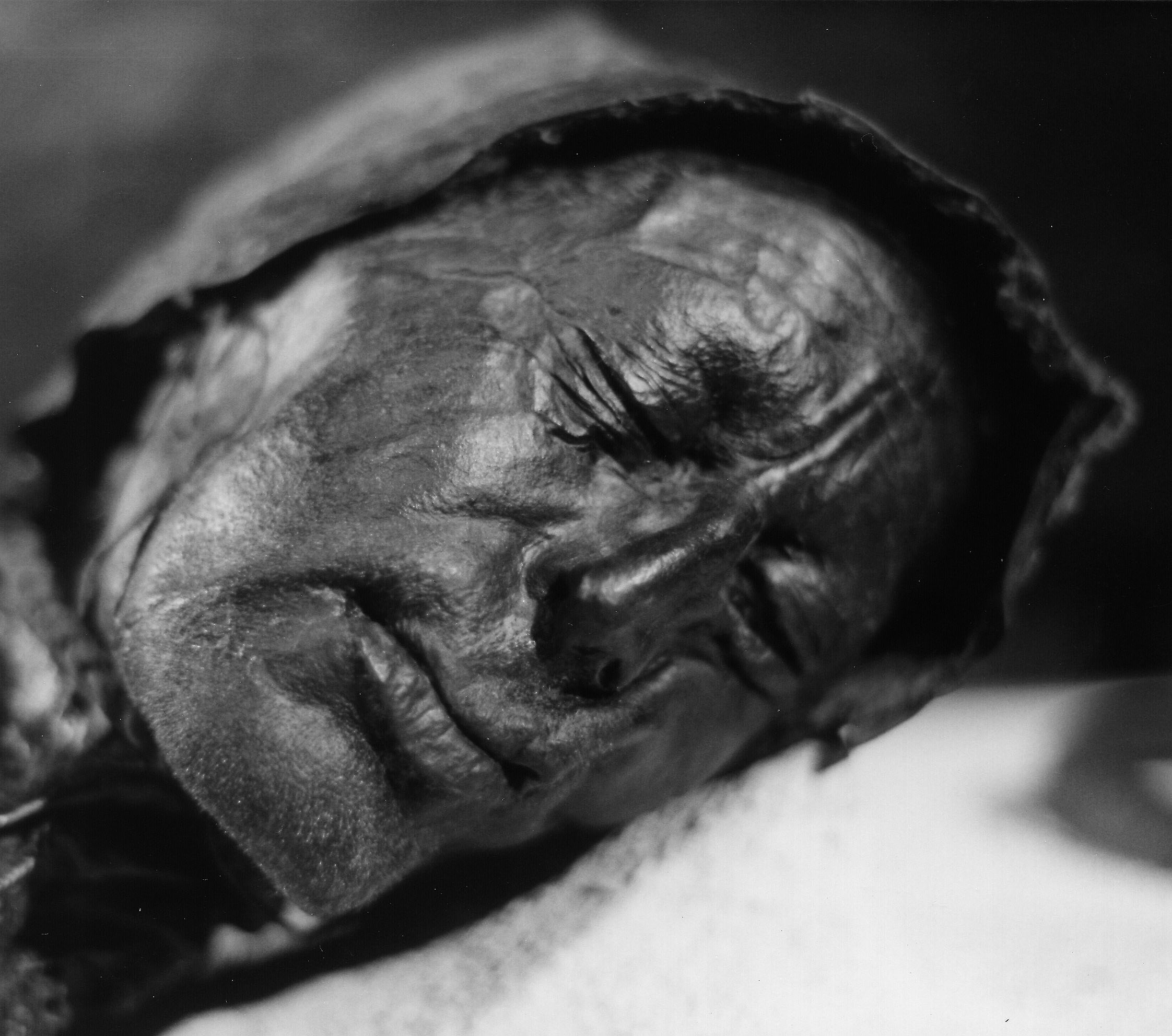
Tollund Man, a body preserved at the bottom of a peat bog in Denmark from the 4th century BC. Image Credit: Sven Rosborn/Wikimedia
Mummification has a long and rich history, but with the exception of a few remarkable cases (personal favourite: Bog Bodies), most of the thickly-tanned corpses unearthed today don’t much resemble living humans. It wasn’t until recent centuries that people started using science to preserve the look and feel of living flesh.
A Death Fit for A Communist Leader
Modern embalming techniques vary from place to place, but they usually involve a mixture of formaldehyde and alcohol or water. Bodies embalmed in this manner have a shelf life of approximately 10 years.
Contrast that with the mortal remains of Vladimir Lenin, which were apparently looking pretty good when they turned 145 this year. Thanks to the extraordinary efforts of the Center for Scientific Research and Teaching Methods in Biochemical Technologies in Moscow — save your breath and call it the “Lenin Lab” — the Soviet founder’s corpse still maintains the look, feel, and flexibility of Lenin toward the end of his life. If anything, the body’s appearance has improved with age.
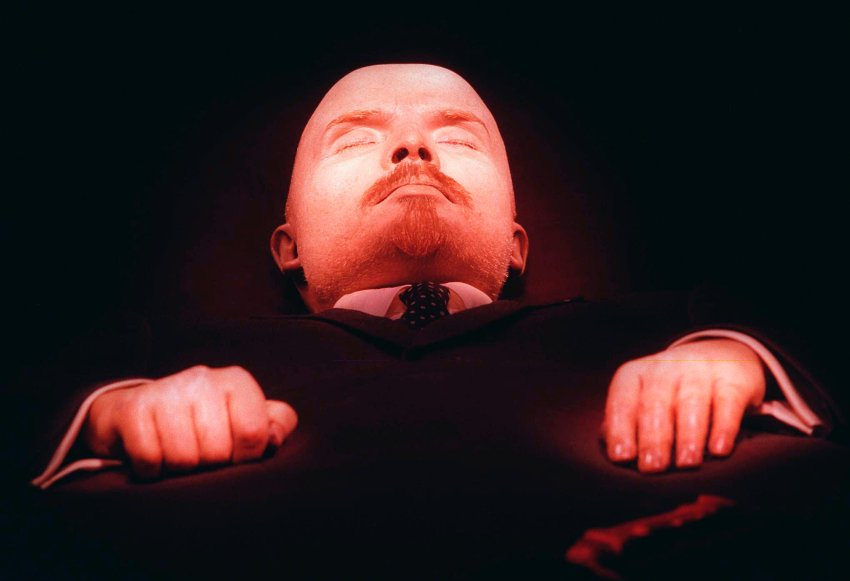
Lenin’s body, photographed April 16th, 1997. Image Credit: Larry Koester / Flickr
The quest to preserve the former communist leader grew out of the work of anatomist Vladimir Vorobiev and biochemist Boris Zbarsky, who, after two months of political debate, were permitted to perform experiments on Lenin’s corpse beginning March of 1924. (Thankfully, it was a cold winter, and Lenin, whose brain and organs were removed during initial autopsy, didn’t decompose too much in the intervening weeks.) “No one was certain whether the experiment would succeed and, if it did, how long the body could be displayed after that,” writes Alexei Yurchak, a professor of social anthropology at UC Berkeley. “The plan was to attempt to preserve it for as long as possible.”
The gamble was a resounding success. In what Yurchak describes as “a dynamic method of preservation,” Lenin is reembalmed every year; his body is submersed in a slew of preservatives and antimicrobial solutions, including glycerol, formaldehyde, hydrogen peroxide, and acetic acid. Each of these “sessions” can take weeks. When the corpse is wheeled out for its annual public appearance, it’s covered in a rubber suit that keeps a thin layer of embalming fluid trapped against the skin. (A regular suit of clothes fits overtop.)
As new challenges have arisen, Russian scientists have innovated, “substituting original organic materials with artificial ones, and regularly resculpting [Lenin’s] shapes and surfaces.” Lenin’s eyelashes were replaced with fake ones long ago, and artificial skin patches now cover much of his body. Today, the corpse might be seen as more a sculpture than anything else — one that grew out of the body itself. Like any work of art, Lenin’s maintenance is driven by aesthetic criteria. What’s exceptional is the amount of knowledge that’s been garnered along the way.
Steeped in Honey
If life in twelfth-century Arabia wasn’t sweet enough, perhaps there was morbid solace to be found by turning your mortal remains into a sugary confection. Throughout human history, people have filled the coffins of honored men and women with food and other burial items preserved in honey. We’ve also candied our fair share of corpses.
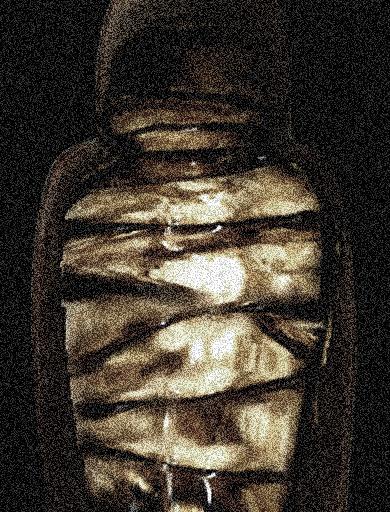
The practice of “mellification” — literally, transforming a cadaver into human rock candy by steeping it in honey — was supposedly practiced by men of ancient Arabia. Tales of mellifed men come to us from Chinese sources, most notably the Bencao Gangmu, a compendium of exotic cures penned by 16th century Chinese apothecary of Li Shizhen.
Artist’s impression of a mellified man. Image Credit: Wikimedia
According to Shizhen, mellification was a self-sacrificial process that began before death. Near the end of their lives, the to-be-candied men would eat, drink, and bathe in nothing but honey, the result being that they’d soon be pissing, sweating, and shitting honey, too. When the saccharine diet eventually did them in, these brave souls would be placed inside stone coffins and submerged in — you guessed it — more honey.
After a century or two of….ripening, honey men would be pulled out of their sickly sweet brine, broken up into small confectionary fragments, and sold in bazaars for a premium. Mellified men were reportedly capable of healing broken limbs and other ailments. However, as Mary Roach points out in her book Stiff: The Curious Lives of Human Cadavers, “The popularity of some of these human elixirs probably had less to do with the purported effective ingredient than with the base.” That is, the honey might have done the trick all by itself.
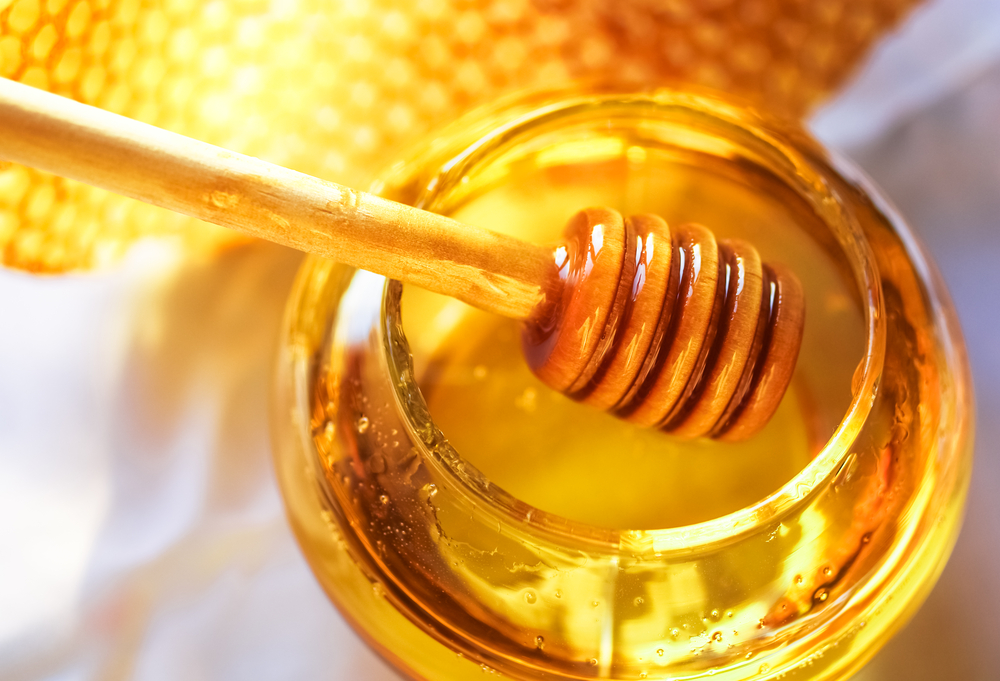
Honey is one of the best natural preservatives we know of. Image Credit: Shutterstock
Even if the tales of Arabian mellification are apocryphal, there’s good reason to believe this preservation method was sound. Honey’s unique physical and chemical properties renders it a remarkable preservative. “Honey in its natural form is very low moisture,” Amina Harris, executive director of the Honey and Pollination Center at UC Davis told Smithsonian Magazine. “Very few bacteria or microorganisms can survive in an environment like that, they just die. They’re smothered by it, essentially.” What’s more, thanks to the particular chemical reactions between a bee’s stomach enzymes and nectar, honey contains hydrogen peroxide, a powerful antimicrobial agent.
A sealed jar of honey will keep pretty much indefinitely. So, it doesn’t seem too surprising that humans would turn to this substance for everlasting existence.
Go Plastic Or Go Home
Ahh, modern life….filled with Netflix, WiFi hotspots, and corpses that don’t stink to high heaven. If they’re properly plasticised, that is. In this decidedly modern take on human rock candy, cadavers are subjected to a four-stage plasticizing procedure that essentially turns them into giant action figures. No smell, no decomposition, no goopy stinky liquids. A classy way to remain tethered to the Earth.

The process of plastination was first developed by Gunther von Hagens in 1977. Like other human preservation techniques, variations abound, but here’s the gist: First, the body is fixed in a preserving solution, usually formaldehyde, to prevent tissue decomposition. After fixation, an anatomist will perform any necessary dissections, opening the body up to reveal tissues and organs for display.
Gunther von Hagens with a plastinated gorilla. Image Credit: Wikimedia
Next, dehydration. After all dissections are finished, the specimen is placed in a sub-zero acetone bath. As the body freezes, water is drawn out of its cells and acetone, with a freezing point of -139ºF (-95ºC), floods in to replace it.
Once all that pesky water is out of the way, the acetone-filled corpse is placed in a bath of liquid polymer — silicon rubber, polyester, or epoxy resin. Now it’s time to remove the acetone. Under vacuum conditions, acetone quickly dissipates, drawing liquid plastic into the body’s cells as it exits. The corpse can now be reconfigured into its final resting position, before its plastic-filled organs and tissues are cured with gas, heat, or UV light.
Plastination was made famous by Von Hagens’ BODY WORLDS exhibits, which, since the late ’90s, have travelled the world revealing the innermost secrets of human lives to the pubic. I strongly recommend checking out the exhibit next time it comes to a city near you — you’ll never see your own human meatbag the same way.
Cryogenics
And finally, we get to cryogenics, the bodily preservation method of choice for spacefarers attempting to traverse impossibly long cosmic distances, and celebrities in the 21st century. Among all the preservation techniques detailed in this post, cryogenics is the only one whose goal is to extend life.

Image Credit: Shutterstock
The principle is simple: cold is one of the best ways to preserve organic tissues. Certain organisms, from microbes to frogs, can wake up and go about their business after long stints at subzero. Might humans do the same? If so, we may be able to freeze people with incurable illnesses today, in the hopes that science and technology will save them tomorrow.
That idea may have the ring of far-fetched science fiction, but it’s compelling enough that several companies, most notably the Alcor Life Extension Foundation, are now offering cryogenic services. For $US770 a year, you can become an Alcor member, a contract which guarantees your body space in a tomb of liquid nitrogen — provided you can shore up an additional $US80,000 (for brain-only) or $US200,000 (for full body) cryopreservation upon death.
Alcor’s cryopreservation procedure is best described as intense. Immediately after a patient’s heart stops, he’s moved onto an ice bed; his circulation and breathing are artificially restarted with a “heart lung resuscitator.” The patient is then given a cocktail of intravenous drugs, including anticoagulants and pH buffers, before his blood is pumped out and replaced with an organ preservation solution.
Once at Alcor’s Arizona facility, the patient’s circulatory system gets another flush before a medical-grade antifreeze is slowly introduced; this solution allows the body to be cooled to a resting temperature of -196C over the course of two weeks. The body — or brain — is then sent to storage in a stainless steel dewer at Alcor’s facilities, where it remains indefinitely, waiting for a cure.
There’s one big catch, as I’m sure you’ve already surmised: there’s no guarantee that any of this will work. No guarantee that the technology to extend your life, cure your illness, even resuscitate you properly, will ever be invented. But Alcor remains optimistic, offering this aptly reductionist summary of your existence on its website:
Ultimately the difference between life and death for a cell, an organ, or an organism reduces to a difference in how atoms are arranged inside it. It therefore seems certain that future medicine capable of diagnosis and repair at a molecular level will be able to resuscitate people after longer periods of clinical death than medicine can today. How much memory and personality would survive repair and healing after hours of cardiac arrest is not currently known.
Then again, death offers no guarantees, either. Hey, to each their own inscrutable end.
***
The preservation techniques I’ve described here are but a small fraction of the fascinating ways humans have attempted to preserve their bodies throughout history. Our methods of choice (honey, salt, formaldehyde, ice) are as diverse as our motivations (religion, politics, education, medicine). If there’s one common thread here, it’s that we humans are utterly fascinated by our own mortality. And we’ll never stop chasing the dream that we can somehow, in some fashion, escape it.
